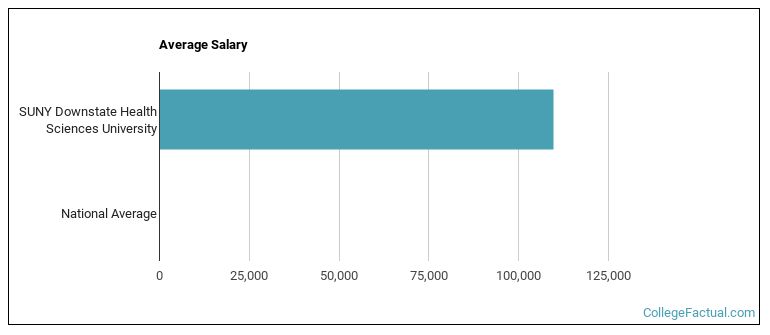 by our College Data Analytics Team
by our College Data Analytics TeamIn its yearly rankings, College Factual analyzes over 2,000 colleges and universities to determine which ones are the best in a variety of categories, such as overall value, quality, diversity, which schools are the best for each major, and much more.
SUNY Downstate Health Sciences University was awarded 59 badges in the 2025 rankings. The highest ranked major at the school is nursing.
Explore the best ranked schools for the programs you are most interested in.
SUNY Downstate was not ranked in College Factual's 2025 Best Overall Colleges report. This could be for a number of reasons, including lack of data.
See all of the rankings for SUNY Downstate Health Sciences University.
The student to faculty ratio is often used to measure the number of teaching resources that a college or university offers its students. The national average for this metric is 15 to 1, but at SUNY Downstate it is much better at 9 to 1. That's good news for students who want to interact more on a personal level with their teachers.
When estimating how much access students will have to their teachers, some people like to look at what percentage of faculty members are full time. This is because part-time teachers may not have as much time to spend on campus as their full-time counterparts.
The full-time faculty percentage at SUNY Downstate Health Sciences University is 75%. This is higher than the national average of 47%.
Find out more about the retention and graduation rates at SUNY Downstate Health Sciences University.
During the 2017-2018 academic year, there were 187 undergraduates at SUNY Downstate with 176 being full-time and 11 being part-time.

See which majors at SUNY Downstate Health Sciences University make the most money.
Get more details about the location of SUNY Downstate Health Sciences University.

Contact details for SUNY Downstate are given below.
| Contact Details | |
|---|---|
| Address: | 450 Clarkson Ave, Brooklyn, NY 11203-2098 |
| Phone: | 718-270-2187 |
| Website: | https://www.downstate.edu/ |
| Most Popular Majors | Bachelor’s Degrees | Average Salary of Graduates |
|---|---|---|
| Nursing | 278 | $112,670 |
| Medicine | 189 | NA |
| Public Health | 92 | NA |
| Allied Health Professions | 63 | $105,434 |
| Rehabilitation & Therapeutic Professions | 55 | NA |
| Medical Illustration & Informatics | 24 | NA |
| Health Sciences & Services | 23 | NA |
| Biochemistry, Biophysics & Molecular Biology | 2 | NA |
| Bioethics/Medical Ethics | 2 | NA |
| Neurobiology & Neurosciences | 1 | NA |
Online courses area a great option for busy, working students as well as for those who have scheduling conflicts and want to study on their own time. As time goes by, expect to see more and more online learning options become available.
In 2022-2023, 851 students took at least one online class at SUNY Downstate Health Sciences University. This is an increase from the 732 students who took online classes the previous year.
| Year | Took at Least One Online Class | Took All Classes Online |
|---|---|---|
| 2022-2023 | 851 | 199 |
| 2021-2022 | 732 | 187 |
| 2020-2021 | 1,305 | 677 |
| 2018-2019 | 0 | 0 |
Learn more about online learning at SUNY Downstate Health Sciences University.
Footnotes
*The racial-ethnic minorities count is calculated by taking the total number of students and subtracting white students, international students, and students whose race/ethnicity was unknown. This number is then divided by the total number of students at the school to obtain the racial-ethnic minorities percentage.
References
More about our data sources and methodologies.